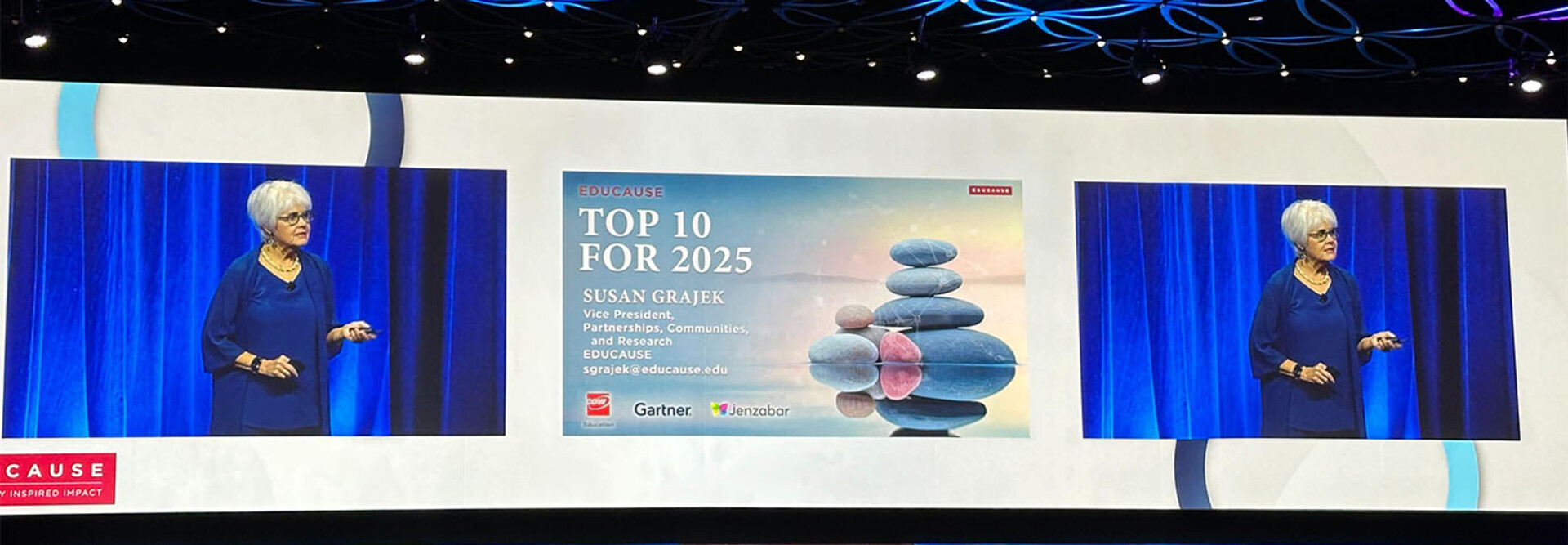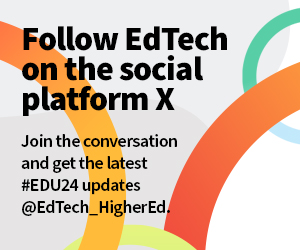This means modernizing processes alongside technology, while also increasing personalization, automation and agility in operations, she said.
The IT issues that contribute to competence in higher education are:
- Administrative Simplification. Streamlining and modernizing processes, data and technologies can make institutions more efficient.
- Faster, Better and Cheaper. Technology that personalizes services, automates work and increases agility can help universities do more with less.
- Taming the Digital Jungle. Updating and unifying digital infrastructure and governance can increase institutional efficiency and effectiveness.
- Supportable, Sustainable and Affordable. Developing an institutional strategy for innovation can lead to new technology investments, pilots, policies and uses.
LEARN MORE: Institutional data should be centralized, not siloed.
A Caring Institution Builds Trust Among Students
Higher ed institutions often use technology to augment or replace human interactions, but the human element is still crucial in maintaining a trustworthy institution.
“We need to show students that we are invested in their success,” Grajek said. “Part of the way we can do this is by making their technology-mediated interactions with the institution seamless and holistic. We need to make sure those experiences are safe, secure and accessible.”
Grajek also noted this level of care should extend to employees, with IT leaders creating a culture that values the staff and their contributions to the institution.
The IT issues that contribute to the caring institution are:
- Smoothing the Student Journey. By using technology and data to improve and personalize student services, institutions can stay connected for the entire student lifecycle.
- A Matter of Trust. Advancing strategies to safeguard privacy and secure institutional data helps students and staff trust that their institutions are protecting them.
- Putting People First. In an era of rapid change and ongoing digital advancements, prioritizing staff development helps retain talent.
- Building Bridges, Not Walls. Increasing digital access for students should also safeguard their privacy and data protection.
Strong Leadership Balances Competence and Caring to Restore Trust
At the fulcrum of this balancing act, Grajek noted, is leadership. Making these investments in modern processes, student and staff support, and overall efficiencies can contribute to the institution’s larger mission.
“The balance isn't static,” Grajek said. “It requires constant adjustment and fine-tuning, so leaders need to serve as the fulcrum of the institution, able to apply the minimum necessary effort or resources to achieve the right balance of caring and competence in order to advance permission and fulfill the institutional decisions.”
DISCOVER: How can technology convince students of higher ed’s value?
The IT issues that contribute to the fulcrum of leadership in higher education are:
- The Data-Empowered Institution. Data, analytics and AI can help institutions increase student success, boost enrollment, increase research funding and enhance efficiencies.
- The CIO Challenge. CIOs must lead digital strategy and operations while coping with leadership transitions, resource limitations, societal unrest and technology advancements.
- Institutional Resilience. Institutions must be prepared to address a growing number of risks, and leaders should contribute to these institutional efforts.
The report focuses on rebuilding trust at an institutional level, but Grajek says individual trust and collaboration with other institutions are just as important.
“At several points in this report, people said, ‘No one institution can do this on their own,’” she says. “Some things that could really accelerate our ability to grapple with some of these issues would be to have shared frameworks, shared ways to demonstrate institutional trustworthiness, but also exploring shared services.”
Keep up with EdTech: Focus on Higher Education's coverage on our EDUCAUSE event page and via the social platform X.













